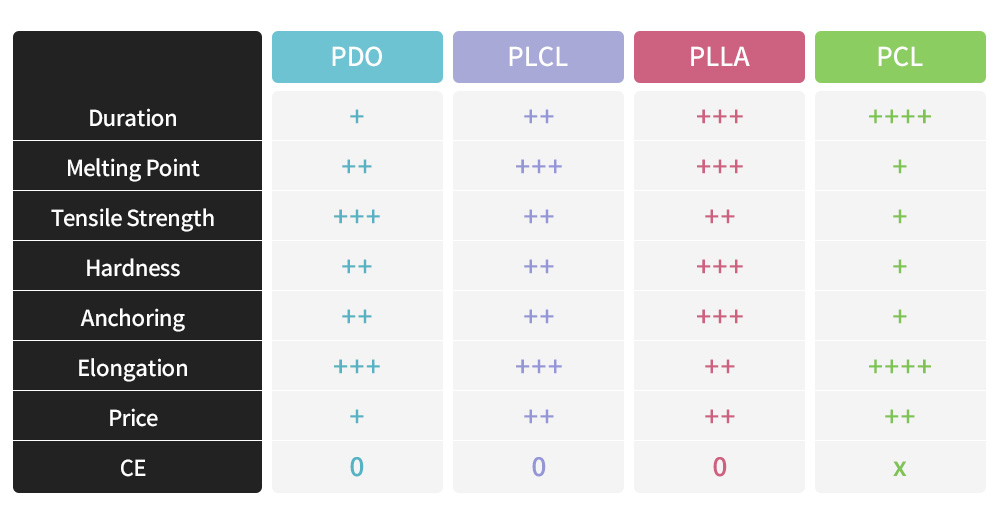-
- PDO
- (Polydioxanone)
- Most commonly used in aesthetic practice, lasts 6-12 months, during which they are completely absorbed within 6-8 months and stimulate collagen production for another 4-6 months. It causes changes in the subcutaneous level (dermis), induce an inflammatory reaction, and stimulate new collagen production. PDO threads are effective in improving pores, fine wrinkles, by collagen formation in the dermal matrix to increase the thickness of thinning skin and can be used for acne scarring and body skin laxity. Body PDO Threads are used to tighten sagging skin on the stomach, buttocks, back, inner thighs, and upper arms, treat cellulite and stretch marks. It has been shown to improve lymph drainage, has a lipolytic effect and elastin production.
- PLCL
- (Poly (lactide-co-ε-caprolactone))
- It mechanically results in instant skin lifting and contracts fat tissue to result in instant skin tightening as well as promoting collagen production and neo-vascularization to renew your skin at the cellular level. All of this works together to give enhanced skin texture, fewer fine lines and wrinkles, and more elastic skin.
- PLLA
- (Poly L-Latic Acid)
- PLLA threads can last up to 1-2 years post-insertion and eventually be broken down to glucose, carbon dioxide, and water. They are often used as an alternative to fillers and botulinum toxin, as they act as a volumizer and are able to stimulate the production of Type 1 and Type 3 collagen. They are much more powerful collagen stimulators than PDO threads.
- PCL
- (Polycaprolactone)
- PCL threads or threads have combination materials including PCL have become more popular over the last few years. They last more than 2 years in the body and are also broken down into naturally occurring substances in our skin. Due to the length of collagen stimulation, they are more powerful threads than PDO or PLLA threads. Best used for jawline tightening, nose lift, and mid-face tissue replacement.
- Thread Types Comparison Table

-
-
Mono Type
-
Screw Type
-
Coil spring Type
-
Cog Type
-
Molding cog Type
-
Twin (Double head)
